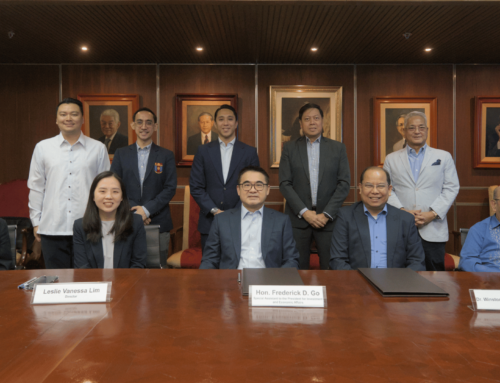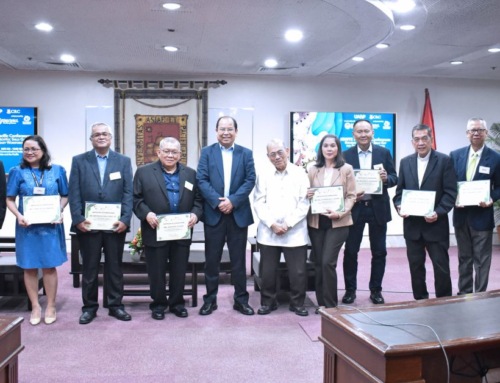This post was last edited on 2015-12-23 14:05:05
CRC Director for Research Dr. Bernardo Villegas gave members of the diplomatic corps a preview of the possible economic scenario in the next administration at the “Philippines Beyond 2016: Economic Briefing for Diplomats” held on October 2, 2015 at the University of Asia and the Pacific.
Presenting an overview of the strengths and challenges facing the Philippine economy, Dr. Villegas noted that in the next six to ten years, GDP growth is likely to average 6% to 7% per year, backed by OFW remittances (estimated at USD 28 billion in 2015) growing 3% to 5% annually; BPO industry growth (estimated at USD 18 billion for 2014); and a 51-million strong workforce with long-term sustainability, thanks to 47 million Filipino adolescents and children. While the country would have access to the huge ASEAN market, downturns in exports would have a reduced effect since exports are only 30.80% of GDP, and a major factor of growth is the 100 million-strong domestic consumer market. Current challenges include corruption in government, a 25% national poverty incidence rate, vulnerability to climate change, inefficient infrastructure, a low rate of investment, and red tape in government offices.
[ Photo: crcarch201512231405a]
Dr. Villegas with fellow UA&P economists (L-R) Dr. George Manzano, Dr. Victor Abola (hidden), and Dr. Peter Lee U at the Open Forum
[ Photo: crcarch201512231405b]
H.E. Luis Antonio Calvo, Ambassador of Spain (standing) at the Open Forum[/caption]
In the open forum, Ambassador Thomas Ossowski of Germany raised the question of the lack of impact of economic growth on the country’s poor. Dr. Villegas replied that government has to prioritize agricultural infrastructure for small farmers; improve rural populations’ access to quality education, healthcare, and clean drinking water; strengthen SMEs; and continue the Conditional Cash Transfer program.
Ambassador Luis Antonio Calvo of Spain asked how the next administration can increase infrastructure spending from 4% to 7% while maintaining credibility, and how growth can be spread out to the provinces. Dr. Villegas recommended investing more in rural infrastructure, similar to Thailand’s development path; focusing on the implementation of the remaining 50 public-private partnership projects; and directing growth towards regional cities such as Batangas City, Iloilo City and Cagayan de Oro City.
An official from the Embassy of India asked whether the Philippines would be a net gainer or net loser in ASEAN integration. Dr. Villegas replied that the country would be disadvantaged in agricultural production, while Dr. Manzano and Dr. U highlighted the Philippines’ advantage in the labor market for services, especially in hotels and tourism.
The other ambassadors in attendance were H.E. Kok Li Peng of Singapore and H.E. Aruni Ranaraja of Sri Lanka. Representatives from the embassies of Argentina, Brazil, Cambodia, Chile, Mexico, New Zealand, South Africa, Switzerland, and Thailand were also present, as well as UA&P President Dr. Winston Conrad Padojinog, Board of Trustees Chairman Dr. Placido Mapa Jr., Board Member Mr. Rene Tan, and faculty members from the School of Economics, College of Arts and Sciences, and School of Sciences and Engineering.
The event was organized by the UA&P Public and International Affairs Office.





